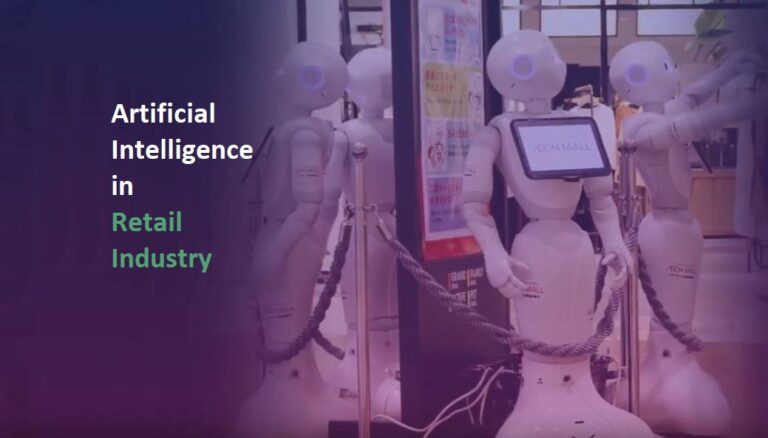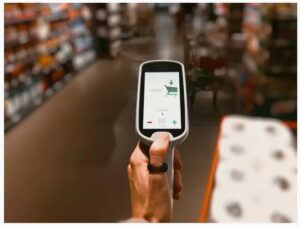It is believed that at the moment, the price of the goods is no longer a deciding factor for modern buyers. More and more users evaluate the quality of goods, the quality of service, personalization of the marketing approach, environmental friendliness, and only after that pay attention to the price.
But does this mean that retailers no longer need to consider the price factor when forming a sales strategy? Of course not, because in the end, it all comes down to money anyway and you still have to consider the main economic law – everyone wants to get more value for less money.
In this article, we will talk about how modern technologies like artificial intelligence help retailers to forecast and optimize their prices in order to ultimately reach an even higher volume of sales.
AI in the Retail Industry – How the Technology Helps to Manage Prices, Predict Trends, Behavior, and Demand
When systems capable of self-learning through working with an incredible amount of data hit the mass market, the retail industry simultaneously received all the aces in their hands. AI in the retail industry marks the end of an era of guesses and assumptions. Suddenly, retailers got the opportunity to find out the truth, as well as anticipate events before they even occur. We will describe how this became possible with predictive analytics in retail.
AI Price Prediction
Previously, it was impossible to predict prices. The only thing that retailers could make was an intuitive prediction that at a certain point in time it would be possible to raise prices for certain goods, since people would still buy them, for example, due to seasonal demand. Today, factors such as seasonality have become conditional.
“With the Power of Artificial Intelligence Systems, Retailers are Given the Opportunity to Make Predictions of the Price at Which a Particular Product will be Purchased.”
Such strong predictive capabilities mean a lot of work with a huge amount of data. AI systems analyze all available information, including data that appears every second, compare current data with historical information, analyze trends, competitors and buying behaviour, and on this basis give the most accurate forecast about what price will suit users at a certain moment.
AI Price Optimization
Obviously, after receiving all this information about the most suitable price, all that remains for retailers is to come up with a price optimization strategy and make it as balanced as possible.
On the one hand, it is necessary to leave the opportunity to make a profit for the company, but on the other, it needs to fit into the expectations of users regarding prices. And here the most promising application of AI in retail begins.
“According to an IBM study, 73% of retailers plan to introduce Artificial Intelligence Systems with the goal of optimizing their pricing by 2021.”
In addition, 60% of buyers choose offers with the best price, although, of course, an analysis of consumer behaviour suggests that other factors also are important.
AI, in turn, analyzes everything that it knows about a particular retailer and its business processes. The system evaluates the number of goods in stock, analyzes the best selling goods, learns to understand at what point in time which products are thought out best, and at what price.
It also determines how the discount on a certain product will affect the sales of another and offers the most optimal strategy, in which the buyer will definitely buy, and the seller will definitely make a profit.
Customer Behavior Analysis
Analytics is the strongest feature of artificial intelligence. These systems are capable of analyzing huge arrays of historical and current information and build analytical models based on them.
Thus, an analysis of customer behaviour based on their purchase history, frequency of purchases, goods that they put in their bags and online shopping carts can say a lot about the client’s personality and lifestyle. By receiving this information, it becomes possible to develop a personalized offer.
Plus, if the retailer will personalize and simultaneously use the capabilities of predictive analytics, then the probability of hitting the target will tend to 100 per cent. High sales and recurring sales are the bottom lines of this technology application.
And by the way, the technologies themselves went even further, and today cameras with facial recognition functionality can read, if not thoughts, then at least the mood and intentions of a user who has visited a physical point of sale.
This gives retailers the opportunity to respond quickly – they can either keep a customer who came for window shopping or sells even more to the one who was originally focused on the purchase.
AI-Driven Demand Forecasting
AI system can
- Predict the effectiveness of events, promotions, marketing strategies,
- Assess the potential demand for a particular category of goods depending on external factors (bad weather, an important football match, whatever);
- Analyze customer behaviour,
- Give clues about where to put the goods so that the customer will buy it.
For example,
“Walmart was the first retailer to optimize its supply chain using IoT. To calculate indicators, the system collects data from cash registers, on the basis of which artificial intelligence draws conclusions about the demand for goods.“
In this case, predictive analytics helps rationally organize deliveries, reduce the risk of adjusting orders, and respond when demand exceeds supply or vice versa.
Predictive Analytics Sales Forecasting
If in the case of predicting and optimizing prices, we answered the question “who” and “for what amount”, now artificial intelligence will answer the question “how much?”. That is, how many goods will be sold at a price that the system has already predicted and helped optimize.
Here, as in all other cases, everything is tied to data – the algorithms analyze the data for the previous period, compared with their assumptions about the best price and patterns of consumer behaviour, plus they work with real-time data. That is, if a certain amount of data indicates the emergence of a new trend, which may affect the sales level of a certain product, then this is also taken into account.
This data helps retailers build more informed strategies that will be based on real analysis, rather than guesses or memories of how it was in the previous season.
Fraud Prevention and Detection
For several years now, artificial intelligence has been very successful in combating financial fraud. Smart algorithms are especially effective in preventing credit card fraud, which has grown exponentially in recent years due to the rapid development of e-commerce and online transactions. The following statistics confirm the relevance of this problem.
- Fraudsters most often trick users by phone (77 per cent of cases), while 46% of all fraudulent credit card transactions occur in the United States.
- As for the real losses of users, in 2016 the amount transferred to fraudsters amounted to about $750 million, and it is expected that this figure will reach 35 billion in 2020.
- 75% of companies are seriously worried about these statistics and plan to introduce artificial intelligence systems specifically to eliminate fraud.
Many banks and startups are introducing systems based on the Know Your Customer (KYC) approach. Its essence is in a detailed analysis of the behaviour of each client, that is, models do not rely on historical data for all transactions, but on the actions of a particular client in isolation from the rest, determining its typical features and actions.
If a client completes a transaction that does not fit into his behaviour pattern, the system gives a signal that a check is necessary.
The system analyzes customer behaviour, location, and shopping habits and triggers a safety mechanism when something seems wrong to the machine and contradicts the established behavioural pattern. Thus, the task of clustering is solved, dividing all client transactions into ordinary and suspicious.
As for the prevention of retail fraud, here artificial intelligence can help prevent situations when someone intends to buy a product in order to return a fake to the seller. The program analyzes the totality of IP addresses and tracks user activity in order to make a conclusion about the legality of actions and intentions. Plus, the same algorithm is used to prevent fraud with discount coupons, when fraudsters intentionally hide IP addresses in order to use the discount several times.
In addition, AI systems are also able to track the behaviour of resellers and detect situations if one of them violates the Minimum Advertised Price.
Where to Start the Introduction of AI in Retail?
The main thing is to identify tasks or business processes where they can bring the greatest value. Therefore, choosing your AI vendor, make sure that you speak the same language – both literally and figuratively, plus you correctly understand the goals of the retail business that will be achieved using AI.
Another important step is to determine the right data for building AI models. The main task is to parse the various data containers and analyze them. After the model has worked in a test environment, it must be integrated with other systems.
What is more, be sure to ask the company representative to show you a portfolio of developed solutions – a reliable partner must have experience in creating AI systems for retail.
And also, keep in mind that in this article we managed to talk only about a few of the possibilities of AI in retail – optimizing prices and preventing fraud in the trading business. In fact, AI can give you more than you can imagine, and the SPD Group can help your business take the best out of advanced technologies to receive high profits.
Also, Read Examples of Artificial Intelligence










